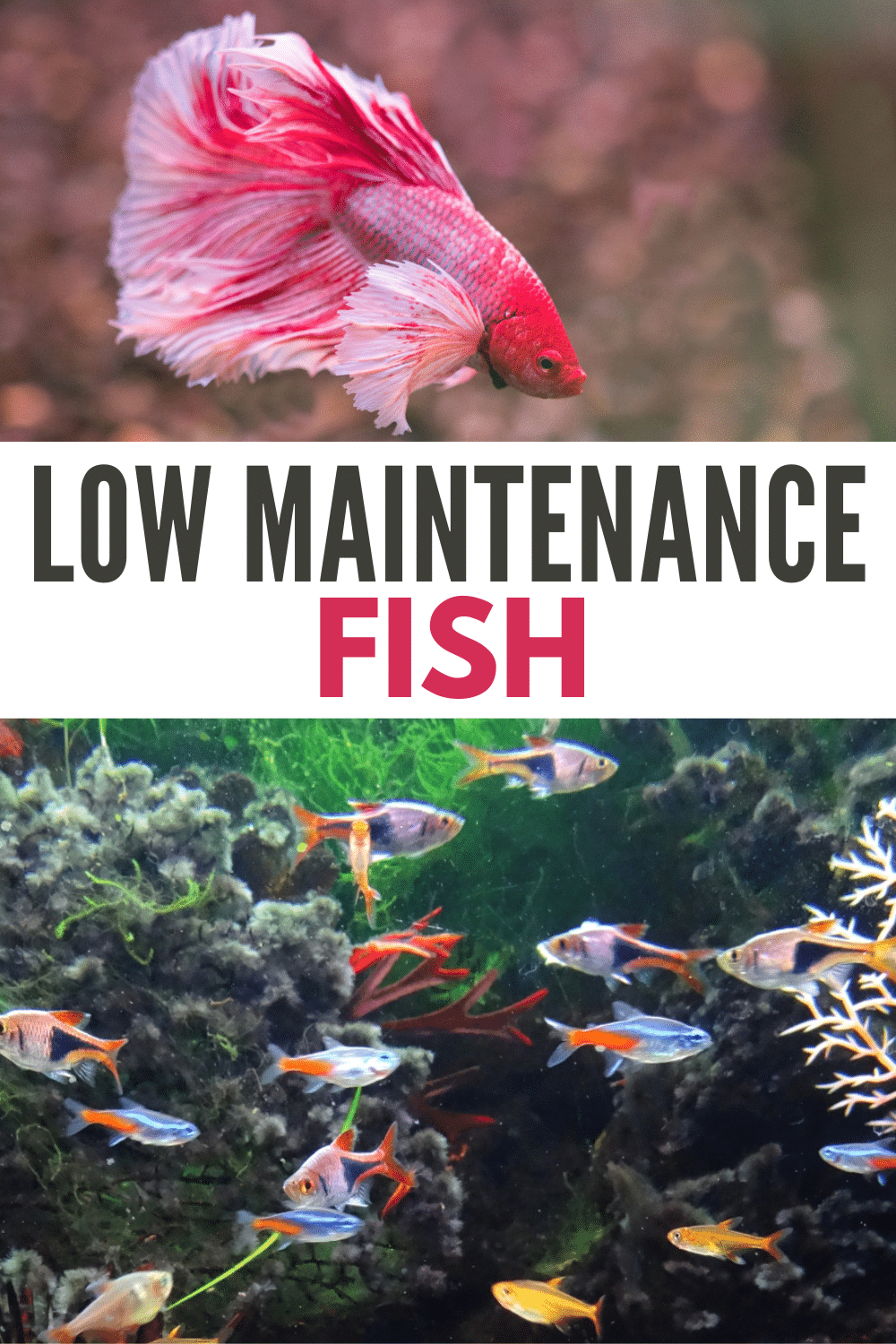Low maintenance fish are excellent for households who want pets but can’t afford to invest a lot of time and money. Luckily, you have plenty of choices when it comes to fish species that are very easy to care for.

Whether you’re seeking an independent, solitary fish, or a school of peaceful species, this list offers a wide variety of options to suit your preferences.
Keep reading to know the best hardy fish that are perfect for beginners.
Jump to:
Benefits Of Choosing Hardy Species Of Fish
Here are several reasons low maintenance fish are an amazing addition to your household.
Affordable Pets
Keeping a fish that’s low maintenance is much more affordable than raising other types of pets. Not only are they cheaper to buy, but their needs are also very budget-friendly.
The amount of money I spend on fish food, for example, doesn’t even come to a fifth of what I spend on dog food. And considering that we have quite a large number of fish in our community tank, no doubt, a good beginner fish will hardly make a dent in your expenses.
Minimal Maintenance
You don’t need to worry about putting much effort into upkeeping your community tank. Most of the popular pet fish have very easy feeding routines and are extremely hardy. So, you only need to spare a few minutes of your day to keep your fish healthy.
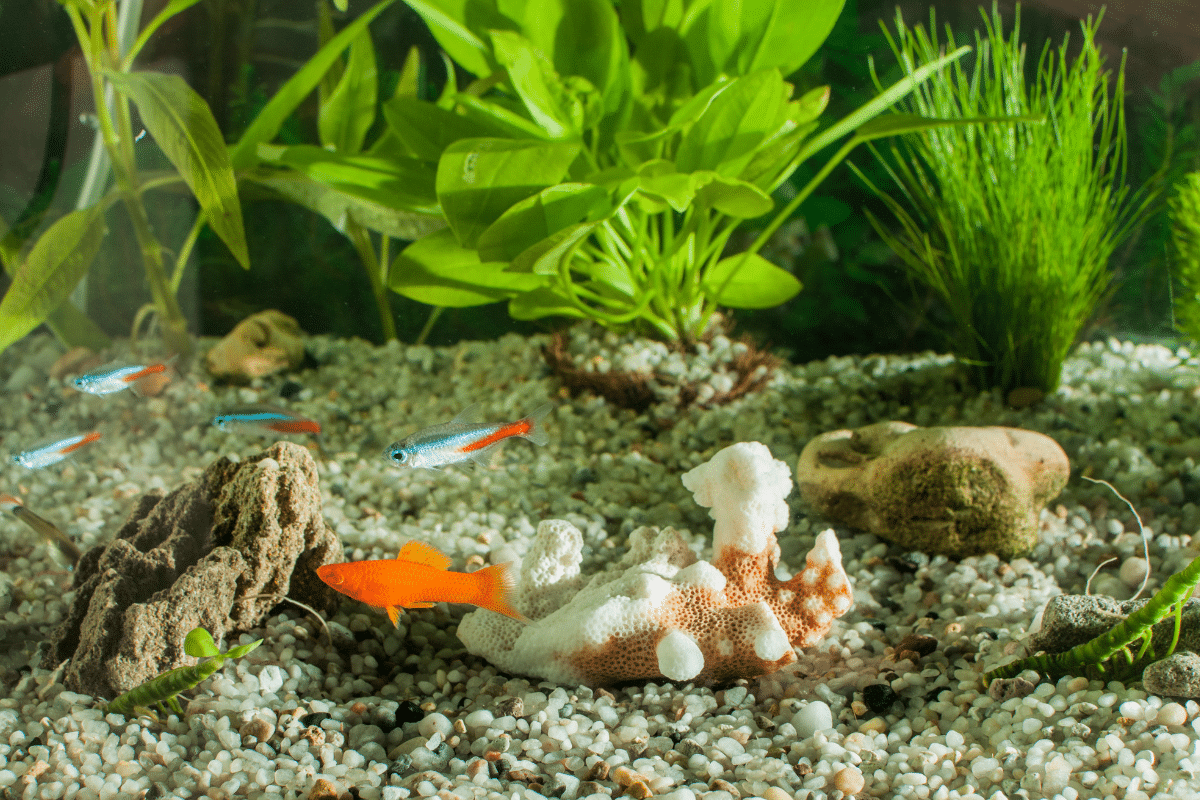
Compared to other pets, fish have minimal cleaning requirements. No need to visit the groomer or vacuum daily to deal with excess fur. In general, you’ll only need a weekly partial water change and a monthly thorough aquarium cleaning to keep the tank clean.
Little To No Noise
If your family can’t tolerate noises well, hardy fish species are an excellent choice as pets for your home. They’re silent companions that’ll be present with you but won’t disrupt your peace through loud vocalizations like cats and dogs sometimes do.
The only sounds you’ll hear will be the bubbling sound of the aquarium water and the hum of your tank’s equipment. And based on experience, these sounds are actually calming and can enhance the overall ambiance of your space.
Great First Pets For Children
As a parent, one of the first steps I took to teach my children about responsibility was to have them care for their own pets. Among the various pets we’ve had, fish proved to be the least demanding and hassle-free, making them ideal for teaching kids about independence.
Unlike other pets, such as dogs or cats, fish don’t need to be walked, groomed, or trained. This makes them perfect for teaching children about taking responsibility without overwhelming them or adding extra tasks to their daily routines.
Enhanced Home Aesthetics
Fish are not only great pets for beginners, they’re also amazing additions to any household looking to enhance the ambiance of their indoor space.
Just observing the vibrant colors of your fish, the lush green leaves of the aquarium plants, and listening to the gentle sound of the bubbling water, will make your home visually and audibly more connected to nature.
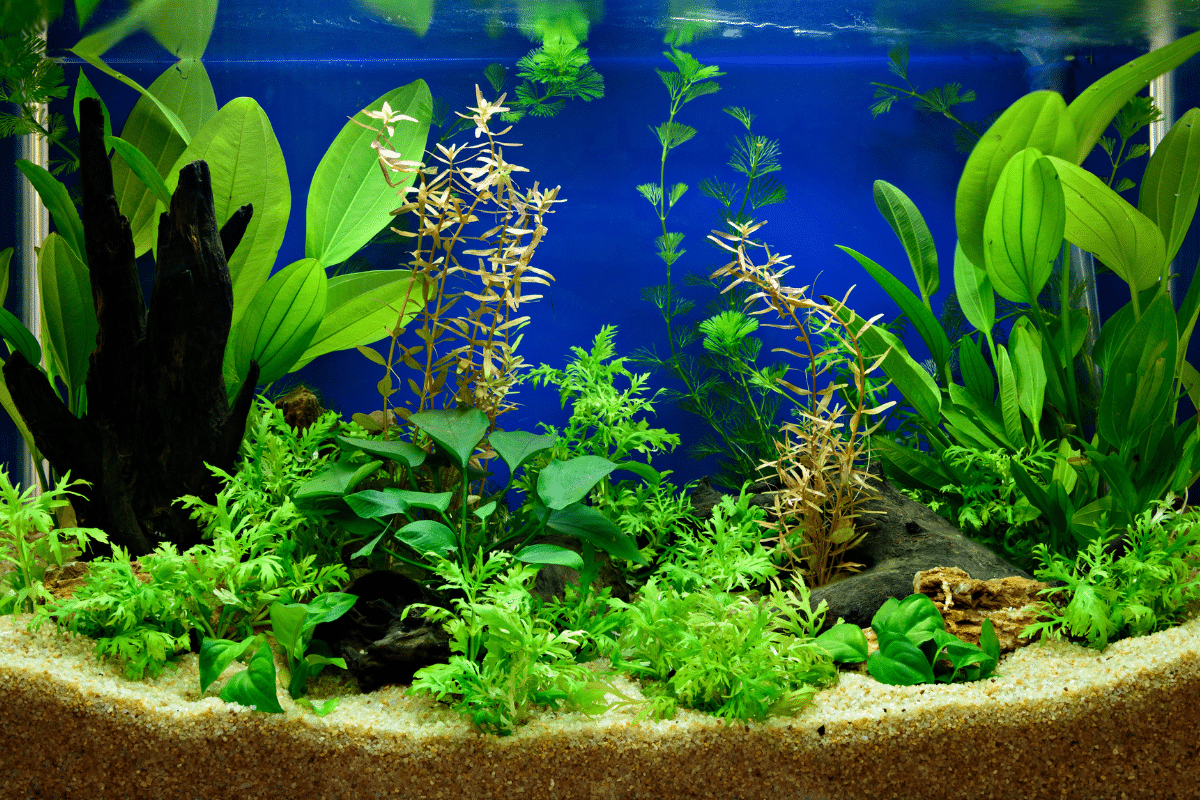
If you also want to make your space cozier, consider keeping different types of fish in a tank for an all-day-long mesmerizing view.
Top 5 Low Maintenance Fish For Beginners
If you’re looking for low-maintenance fish that are great for beginners, this list has got you covered. All of these freshwater fish are hardy and do well in community tanks, making it super easy for you to keep them happy and healthy.
Betta Fish
Let’s begin this list with the very first tropical fish we owned, the Betta fish.

Bettas have long fins and vibrant colors, and they typically grow to a size of 3 to 4 inches. They’re extremely hardy and can thrive for up to five years with little to no issues as long as you feed them appropriately and keep them in at least a 5-gallon tank.
Note, however, that as tropical fish, Bettas don’t do well in temperatures under 78°F. So ensure their water temperature is maintained between 78°F to 82°F.
An aquarium thermometer will be very handy in monitoring and ensuring your tank stays within this temperature range.
The Betta fish is a highly independent fish that doesn’t need tank mates. In fact, male Bettas are known for aggression towards each other. So, if you have a male Betta Fish, it’s better to keep it in a solitary environment rather than housing it with another male Betta.
Of course, though, that doesn’t mean Bettas can’t be raised inside a community tank.
Betta fish can absolutely co-exist with other fish species inside a community tank. Just ensure you use a 10-gallon fish tank, or a bigger one, so every fish has enough space to roam freely. And most importantly, never keep multiple male Bettas in a single tank.
Harlequin Rasboras
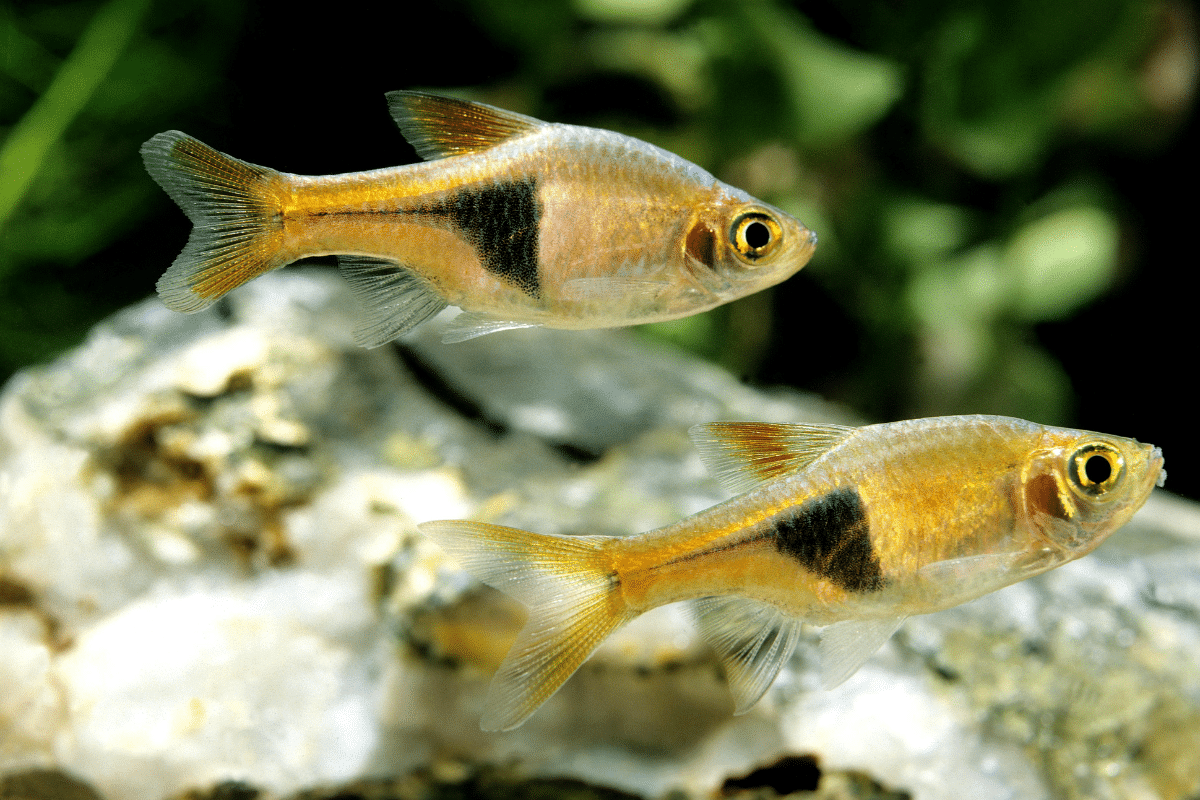
Widely known for the black triangular markings on their tale, the Harlequin Rasboras are captivating little fish with a pinkish-beige body and vibrant orange fins.
As a true schooling fish, they’re happiest when kept in a group of four or more.
Harlequin Rasboras typically grow to an inch or two in size. But they can fill up even the largest aquariums with eye-catching and contrasting colors when kept as a school.
Take note that these fish love to move around a lot, especially when in groups. Hence, keeping them in an aquarium with a minimum size of 10 gallons is recommended.
Of course, a larger tank will always be much appreciated by these wandering tiny fish.
Feel free to add a school of Harlequin Rasboras to your community tank. They’re some of the most peaceful fish on this list, so you’ll have no trouble making them co-exist with your current or new fish family. Just maintain a water temperature of around 76°F, and your Rasboras will be swimming happily.
Neon Tetras

Neon tetras truly live up to their names with their vibrant colors. Primarily made up of streaks of blue and red, these fish typically grow to one and a half inches long and are best kept in schools.
Although they’re small, Neon Tetras require a tank with a capacity of at least 10 to 20 gallons of water. Luckily, they’re not fussy regarding water temperature and quality. So, as long as you keep your tank in a stable room-temperature space, Neon Tetras will thrive.
Can you add these fish to a community freshwater aquarium?
Absolutely.
Neon Tetra Fish are known for their easygoing nature and ability to get along well with other fish species. However, note that these fish breed rapidly and easily. So, place them in a heavily planted aquarium to give future baby fish a place to hide.
Fun fact: Neon Tetras appear to “glow in the dark” in the presence of a black light.
Platy
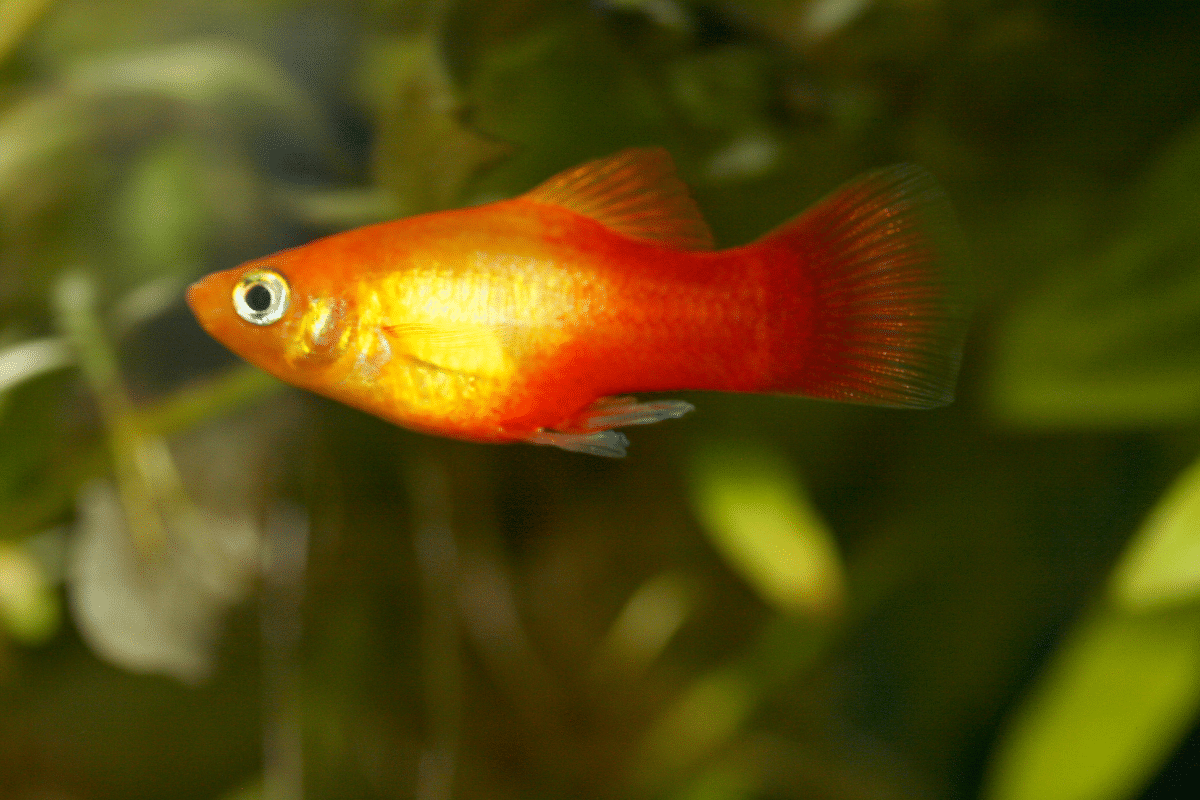
Platies are another excellent choice for beginner fish keepers. These small fish can thrive either on their own or with tank mates, giving you flexibility in designing the aquarium environment you want.
These fish are considered livebearing fish, meaning that after one mating, a female Platy can give birth multiple times. So, if you’re lucky, buying a female Platy fish from a pet store could surprise you with a school of fish for free!
The best thing about Platies is that they’re the least picky eaters I’ve known. Whether that’s fish food or just leftover flakes of bread, they’ll pick at them.
Of course, though, it’s best to stick with food that won’t muddy up your aquarium too much in order to keep the tank clean.
Most Platy fish typically reach a size of 2 to 3 inches. Keep them in a large tank with pH levels ranging from 6.8 to 8.5 to ensure they thrive. Be prepared to transfer your fish into a larger or separate tank if you have a female, live-bearing one.
Standard Goldfish

Of course, I cannot avoid mentioning the classic fish we always find in fish stores: the standard Goldfish. Honestly, it’s no surprise that they’re extremely common; even kids can recognize them at first glance.
They’re literally very easy to take care of, so they’re everywhere!
But don’t make the common mistake of keeping these golden-colored fish in a bowl. Despite Goldfish coming in different sizes, ranging from 8 to 24 inches, each one should at least have 20 gallons of water to swim in.
Goldfish are hardy, so they don’t require a lot of care. However, they often produce more waste than other fish, which causes ammonia, one of the main fish killers. So, ensure you regularly test your tank’s water for ammonia levels.
As much as possible, stick to feeding your Goldfish pellets. Other types of food can cause additional ammonia buildup when they’re not consumed immediately.
Beginner-Friendly Fishkeeping Tips
Here are some tips that will help you keep your fish healthy for years.
Re-create Their Natural Habitat
First and foremost, ensure that you recreate the environment in which your fish grew up. Never place a saltwater fish in a freshwater aquarium and vice versa, as that would be extremely stressful and potentially fatal for the fish.
Research its specific requirements before bringing a future member to your aqua-family home. Look up factors affecting most fish, including pH levels, temperature, water hardness, and water flow.

It’s also helpful to know whether the fish you want requires aquatic plants to thrive. While some won’t mind living in an empty aquarium, certain species, like Neon Tetras, need aquatic plants or decor to provide hiding places for their babies.
Setting up the perfect habitat for your desired fish is the key ingredient to their thriving success. Once you get this part right, everything else falls into place with minimal assistance.
Choose Bigger Tanks
As a general rule of thumb, the bigger the tank, the better. No fish would complain about having an aquarium that’s too big, but many of them may suffer from a limited swimming space.
Using a tank that’s too small causes various problems for your fish, like stunted growth, behavioral issues, and a reduced lifespan.
Not to mention, tanks that are too small are often more difficult to maintain. This is because even the slightest change in pH levels or temperature can affect the entire tank and the fish within it due to the limited water volume.
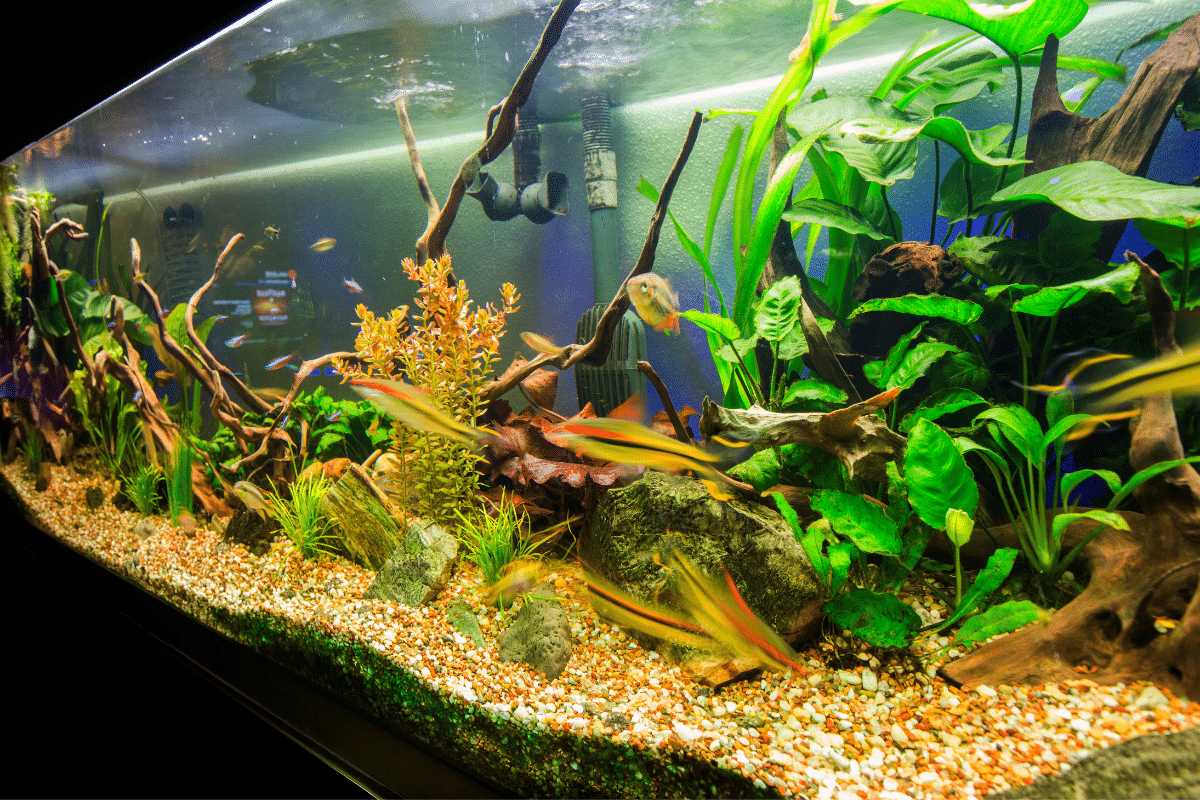
For beginners, I highly recommend choosing a tank that holds at least 10 gallons, and if possible, opt for a 20-gallon tank.
Going for a larger size will allow you to truly enjoy the low-maintenance aspect of beginner-friendly fish.
Keep The Tank Clean
Maintaining your tank’s cleanliness is necessary for your fish to thrive. Dirty aquarium tanks encourage algae growth, cause stress for your fish, and reduce the oxygen in the water, which are all detrimental to the health of your fish.
You should change your tank’s water weekly and clean it thoroughly once a month.
As a general guide, you should replace 10 to 20% of your tank’s water every week. I recommend watching detailed videos about this process to ensure a smooth and efficient cleaning procedure.

You should never replace all the water in the tank at once. Doing this removes the beneficial bacteria in your aquarium and may cause unwanted stress for your fish.
Common Mistakes To Avoid As a Fishkeeper
If you want your fish to stay healthy and live long, avoid these common mistakes most beginner fish keepers make.
Mixing Incompatible Species
I know that looking at various fish species swimming together is a wonderful sight. However, you should never create a community tank without research.
Some fish absolutely hate certain species (or their own type). And if you mix incompatible fish in a single tank, you’d be lucky to have both of them alive for a week.
Always look up the temperament of a fish toward other species before you actually keep them in a single tank.
Replacing All The Water In The Tank
Cleaning your tank does not mean replacing all of the water. In fact, doing so can cause significant stress to your fish, ultimately leading to their death.
As mentioned earlier, beneficial bacteria live in your aquarium water, and your fish rely on them to thrive. It is recommended to replace the aquarium water in small batches weekly or bi-weekly to not make the environmental change too shocking for your pets.
Overfeeding Your Fish
One of the biggest mistakes you can make when keeping fish for the first time is not knowing how much to feed them. Fish are more prone to die from overfeeding than from starving.
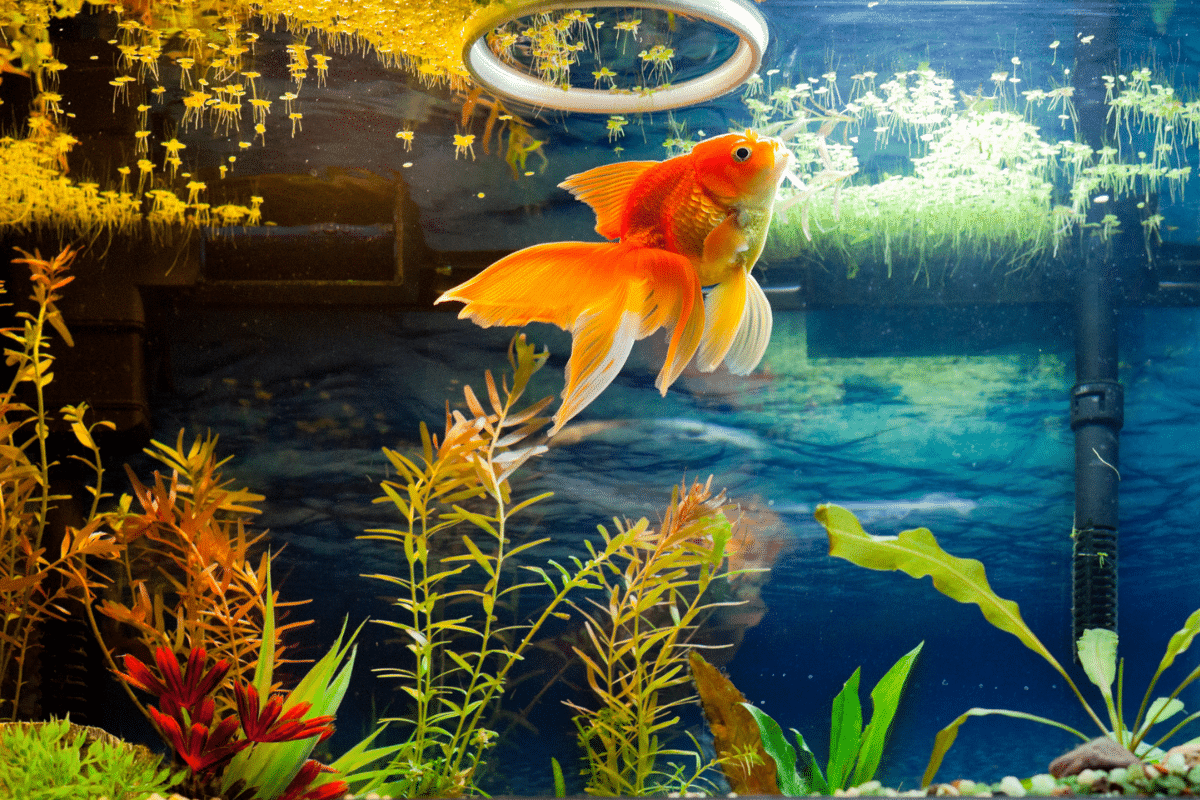
Always remember the right amount of food you should give to your fish. In general, you should only provide them with food they can consume in 2 or 3 minutes.
Feeding your fish once or twice a day is sufficient, so avoid giving them food more often. This gives them more time to digest, thus, keeping them healthier.
Overcrowding The Community Tank
Just because they fit does not mean they’re satisfied.
That’s the general premise you should remember when fishkeeping. Sure, it’s easy to bring home a new fish from the pet store if you already have a tank. However, you should avoid doing so without prior preparation.

Adding an unplanned fish to your community tank can overcrowd the space, which, as you know by now, causes tons of problems to arise.
If you want the freedom to add fish anytime during your fishkeeping journey, start with a bigger tank. Preferably, use a 20-gallon aquarium. And if possible, aim for larger ones.
Remember to look up how much space a fish needs before adding it to your community tank. A Goldfish, for example, thrives if it has 20-gallons of water all to itself. Hence, if you plan to add this luxurious-looking fish to your tank, ensure your aquarium has enough space to accommodate its needs.
FAQs
Among the popular easy-to-care-for fish species, Goldfish has a relatively long lifespan. This fish can live up to an impressive 15 years with the right care and a healthy environment. The longest reported Goldfish to ever exist reached a lifespan of 30 years.
No, regular water changes are necessary to maintain clean water in your tank. While vacuuming helps remove debris and waste, it won’t be sufficient to maintain the water quality. It’s highly recommended to perform 10-20% water changes every one to two weeks.
Fish typically survive a few hours or a day without filtration, depending on the size of your aquarium and the number of fish inside the tank. Without filtration, the water quality can easily deteriorate and produce toxins. So it’s best to have a properly functioning filtration system at all times.
Fish are highly sensitive to changes in temperature. Even a subtle temperature change may lead to stress or even harm your fish’s overall health. Although some fish have different preferred temperature requirements, most tropical fish thrive at 75°F to 80°F. It’s best to conduct thorough research on the fish you plan to keep.
Effortless Aquatic Bliss With Low Maintenance Fish
Low-maintenance fish are some of the best pets to keep. Not only are they extremely easy to care for, but they’re also inexpensive, quiet, and visually appealing. So, you’ll enjoy multiple benefits by keeping these swimming companions in your household.
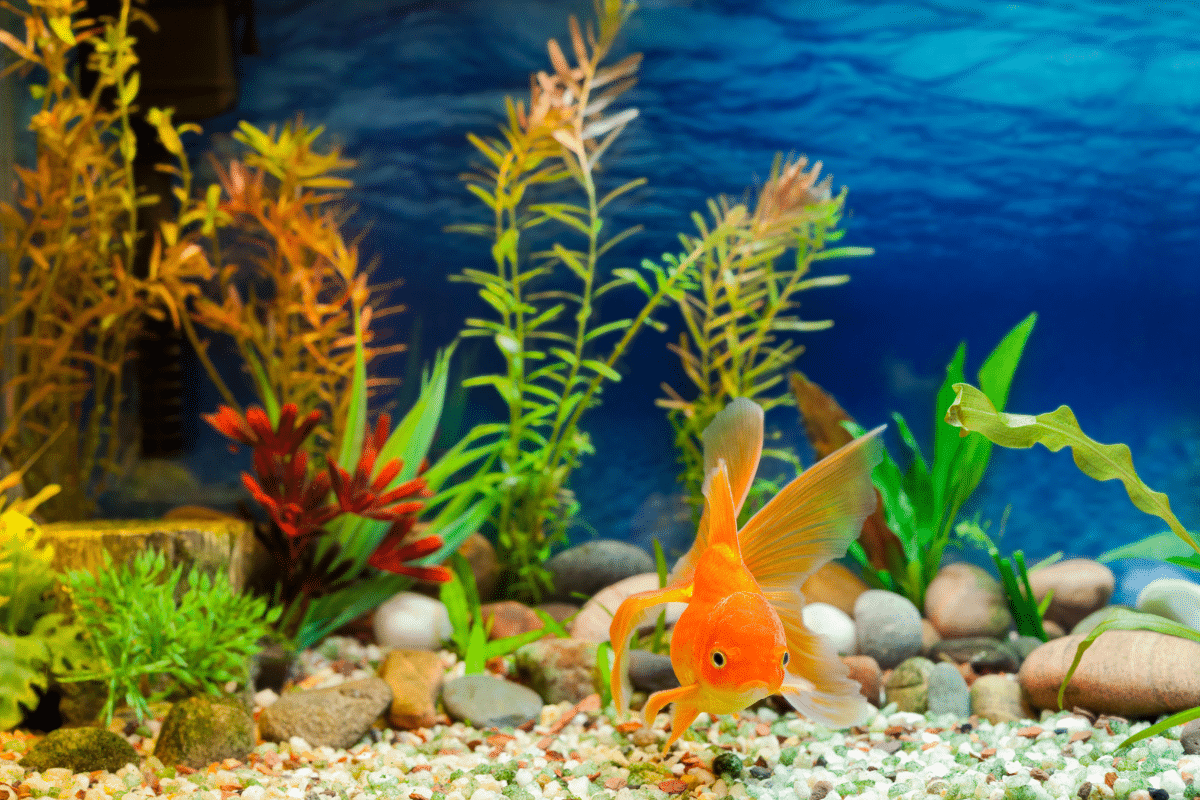
However, as I always say, low maintenance is by no means no maintenance. Even beginner-friendly fish have specific care requirements. Therefore, you should always research and remember how they can thrive in your care.
Make sure to follow the tips and avoid the common mistakes listed above. Doing so will give you a significant head start to having a successful fish community.
Always remember that research is going to be your best friend in your fishkeeping journey. So, during your first few months as a fish keeper, keep trying to learn more about how to provide optimal living conditions for your fish family.

